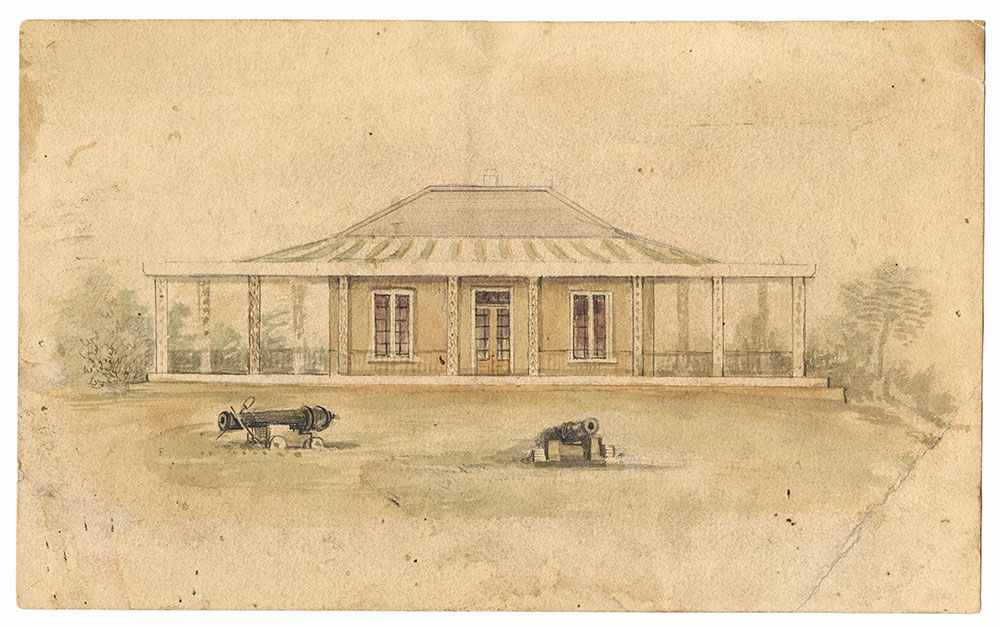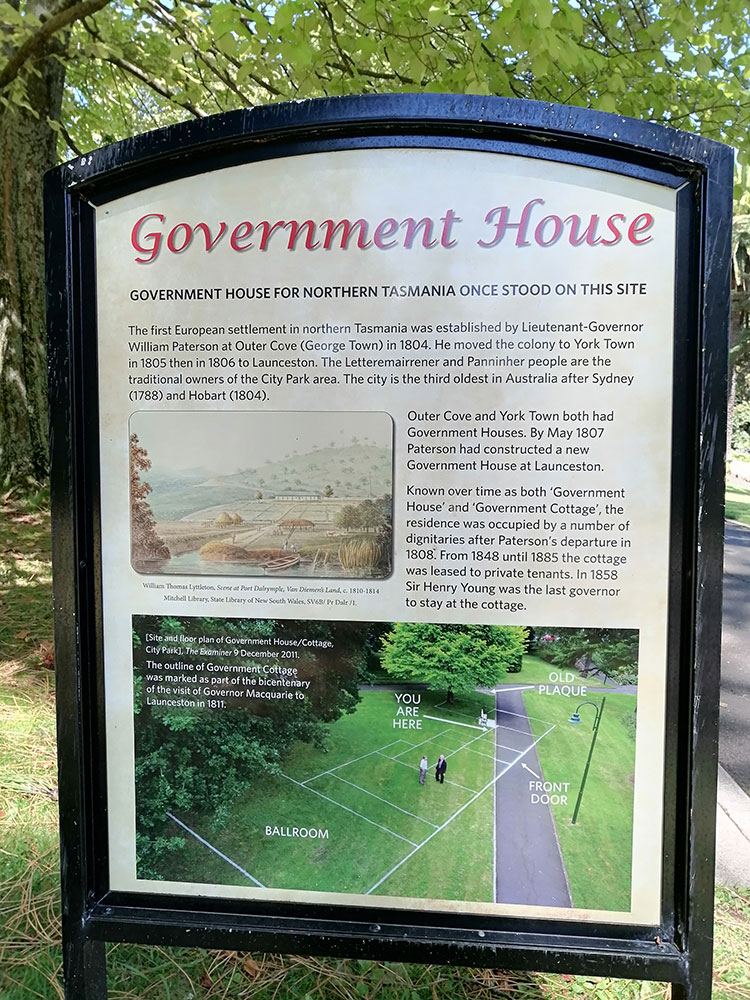Before colonisation
All dates before colonisation are approximate and based on current archaeological and scientific evidence
43,000 years ago – The First Australians begin seasonal migrations towards the south into southern Sahul (now Tasmania). They travel across land, along coastal areas and down the east coast. At this time, the island we now call Tasmania, is still connected to what becomes mainland Australia by a stretch of land.
25,000 years ago – During this long period (the Pleistocene era about 2.5 million to 11,700 years ago), the earth experiences four glacial events, or ‘ice ages’. Ice about 4 metres thick covers much of the north and south poles and beyond. Because extensive expanses of water had frozen to form ice, sea-levels around the earth are about 125 metres lower than they are today. The central areas of the land that later becomes Tasmania are uninhabitable, with glaciers in the central highlands, sub-zero temperatures, and very little fresh water. People live in the southwest of the land because the climate is milder and there are open grassy plains that are good for hunting. Aboriginal People shelter in places that have fresh water, such as Kutikina Cave.
19,000 years ago – The climate begins to warm. Over the next 7,000 years, glaciers in the central highlands melt, polar ice caps shrink, and sea levels rise around 130 metres. As part of this process the Tamar estuary is formed.
12,000 years ago – During the Holocene era, (around 11,700 years ago), Bass Strait forms when glacial ice melts. Aboriginal People in southern Sahul are cut off from what becomes mainland Australia by rising seas and the formation of the body of water (later called Bass Strait). Tasmania’s Aboriginal People become the most isolated people on the planet. Over the next 12,000 years, they evolve distinctly different cultures and between 9 to 11 separate languages. At least 9 distinct nations of people, each numbering 800 – 1000, form over time. Cultural practices differ from nation to nation, although there are some similarities, such as common creation stories and the ways they commemorate the deceased.
1788 – The First Fleet lands in Sydney Cove and Captain Arthur Phillip establishes the first British colony. For the First Australians, this is an ‘invasion’ because they never agreed to give up their lands or their sovereignty.
British colonisation of lutruwita/Van Diemen’s Land
1798 – George Bass and Matthew Flinders are sent by Governor Hunter from Sydney to explore Van Diemen’s Land to determine whether a strait of water exists between the mainland and Van Diemen’s Land. They come ashore near where the Tamar River enters Bass Strait and spend 16 days exploring the river as far as Freshwater Point. Governor Hunter names the estuary ‘Port Dalrymple’, after the naval hydrographer Alexander Dalrymple.
1803 – Lieutenant John Bowen is tasked with setting up a settlement in the Derwent Valley and chooses what is now Risdon Cove. Forty-nine people, with a mix of military, free settlers and convicts, arrive over 5 days in late September on the ships Lady Nelson and Albion.
1804 – In January, William Collins leads a group, including Robert Brown and Thomas Clark, to explore Port Dalrymple and they travel south to Cataract Gorge. Later that year, an expedition to settle the area is sent from Sydney and led by Lieutenant Colonel William Paterson. On 11 November, Paterson sets up camp at Outer Cove, which is later named George Town. However, it soon becomes clear that the site is not suitable for permanent settlement because of its limited fresh water, sterile soil, and poor-quality grass. The poor conditions cause many of the valuable herd of over 600 Bengal Cattle to become sick and die.
1804 – Risdon Cove: On 3 May, a significant clash occurs between the military and Tasmanian Aboriginal People of the Oyster Bay nation (possibly the Pydairrererme and Moomairremener clans). Primary sources for this event are not reliable, so it is not possible to determine exactly how many Aboriginal People were killed; what is certain is that there were multiple fatalities.
1805 – Seeking better pastoral conditions, Paterson decides to move the settlement to the other side of the river, to West Arm at the site he called York Town. York Town has a more reliable freshwater supply but the colonists struggle to produce viable food sources because of the poor quality of the soil.
In order to save the valuable cattle (and his career), Paterson decides to send a small group of colonists to establish a cattle farm on the banks of the North Esk River. Governor King names the farm ‘Patersonia’ after William Paterson; however, Paterson is not comfortable with the name and in 1806 changes it to Launceston in honour of the Governor of the colonies, Captain Gidley King who was born in Launceston (pronounced ‘Lawn-ston’), the capital of Cornwall in England.

Watercolour sketch of Government Cottage, City Park Launceston, 1859. Tasmanian archives
1807 – William Paterson orders a Government Cottage to be built in Launceston on what is now the south-eastern section of City Park.

Sign in City Park Launceston showing the location of Government House (Photo: G. McLean)
1808 – It becomes obvious that the farming settlement at the confluence of the 3 rivers is more sustainable for settlement. Good crops are being produced and the cattle thrive. As a result, York Town is abandoned in favour of Launceston.
1811 – The newly appointed Governor of NSW (Van Diemen’s Land was still part of NSW at that time), Major-General Lachlan Macquarie and his wife Elizabeth visit Van Diemen’s Land. Macquarie is not impressed with the settlement at Launceston and orders the settlement to be moved back to the mouth of the Tamar River at Outer Cove (renamed York Cove). Macquarie has plans drawn up for a large town which he names George Town after King George III.
1812 – From 1804, Van Diemen’s Land is administered as two counties (Buckinghamshire and Cornwall ) by two Lieutenant-Governors who are responsible to the Governor of the colony of NSW, Macquarie, who lives in Sydney. The two divisions are amalgamated into one on 1 July 1812 which is administered by one Lieutenant-Governor (until 1825 when George Arthur becomes Governor of the separate colony of Van Diemen’s Land).
1819 – Upon the orders of Governor Lachlan Macquarie, George Town becomes the headquarters of the northern settlement.
1820 – Judge and royal commissioner John Thomas Bigge is sent by the English Government to conduct an inquiry into colonial administration in the colony of NSW. He visits Van Diemen’s Land and recommends that building works in George Town should cease and the headquarters be moved back to Launceston. Governor Macquarie refuses to comply.
1822 – Bigge is highly critical of Macquarie’s administration of the colony. Macquarie resigns and he and his family depart for England in February. Lieutenant-Colonel Charles Cameron moves the northern headquarters back to Launceston.
1824 – Launceston finally gains a sense of permanence and continues to attract new colonists, such as merchants and free settlers. One of the first wealthy free settlers is William Effingham Lawrence. He builds the opulent stone homestead called ‘Sunnybank’ in what is now Brisbane Street. The house is still there opposite City Park but it is neglected and rundown.
1825 – Van Diemen’s Land becomes a separate colony in 1825 governed by a Governor, George Arthur. Launceston is officially proclaimed the headquarters of the north by Governor Arthur who appoints Captain William Balfour as Commandant.
1853 – Transportation of convicts to Van Diemen’s Land ceases.
1855 – The colony is officially named Tasmania in November.
